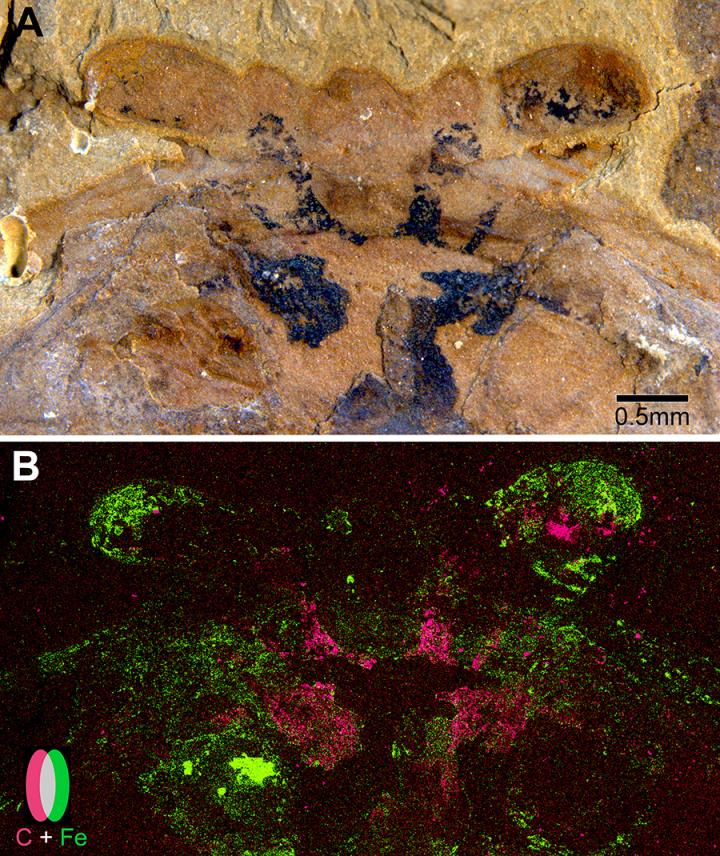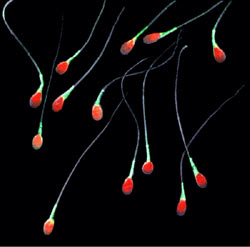
A: Under a light microscope, the above fossil shows traces of preserved neural tissues in black. B: An elemental scan of this fossil uncovered that carbon (in pink) and iron (in green) do not overlap in the preserved neural tissue. (Image credit: Strausfeld et al. and Current Biology)
Researchers have found what they believe is definitive evidence that brains do fossilize. In 2012 Nicholas Strausfeld co-authored the first ever report of a fossilized brain in an edition of Nature, however the findings were widely doubted as only one sample was found. Strausfeld and his team have now found seven fossil of the same species, and inside each found traces of what they believed to be brain matter.
Additionally the team found the brains preserved as flattened carbon films, some of which were overlaid by crystals of iron pyrite. The research team believes this explains how and why the brain tissue fossilized. The fossils are of Fuxianhuia protensa, is an extinct arthropod that roamed the seafloor about 520 million years ago.
Original research paper published in Current Biology on November 9, 2015.
Names and affiliations of selected author


